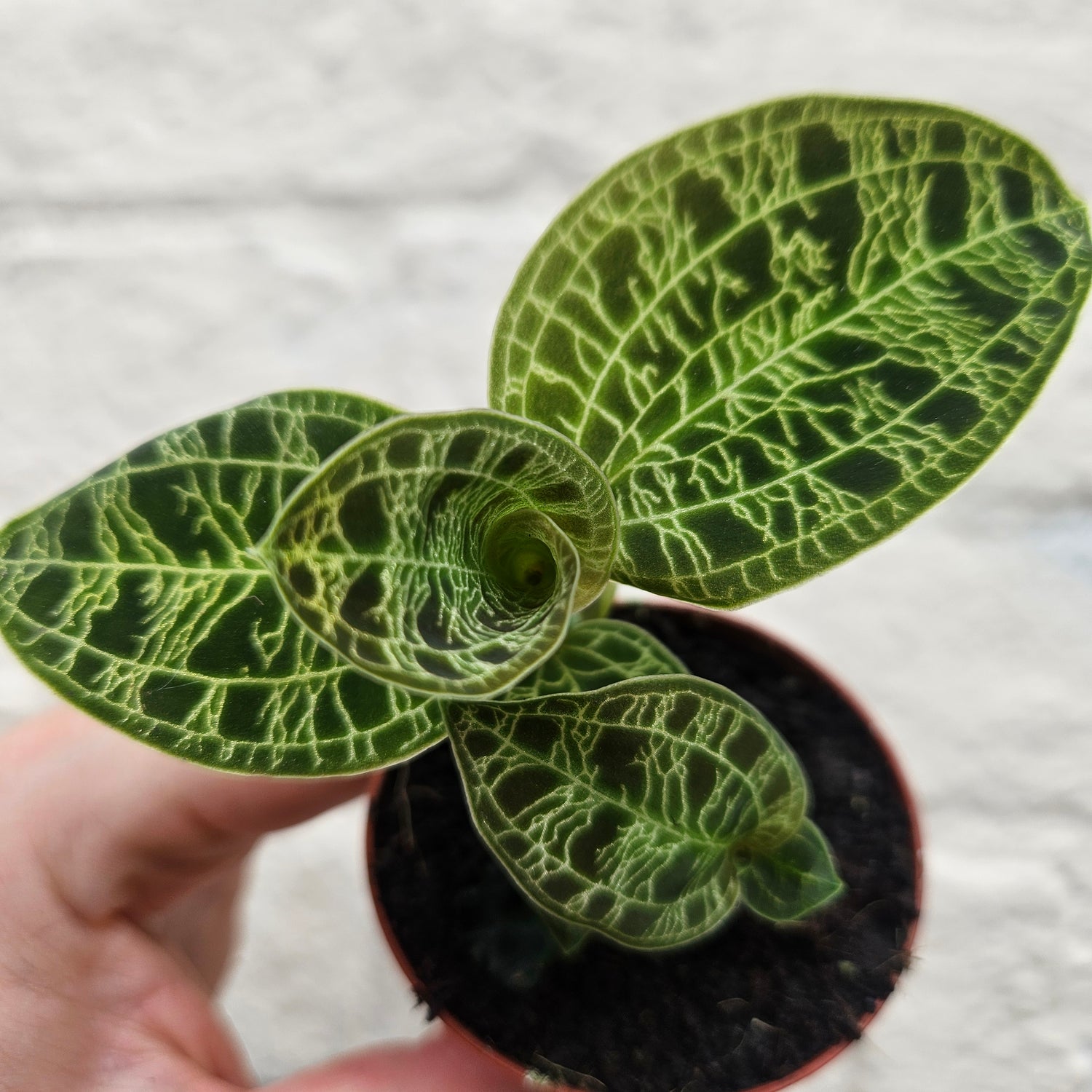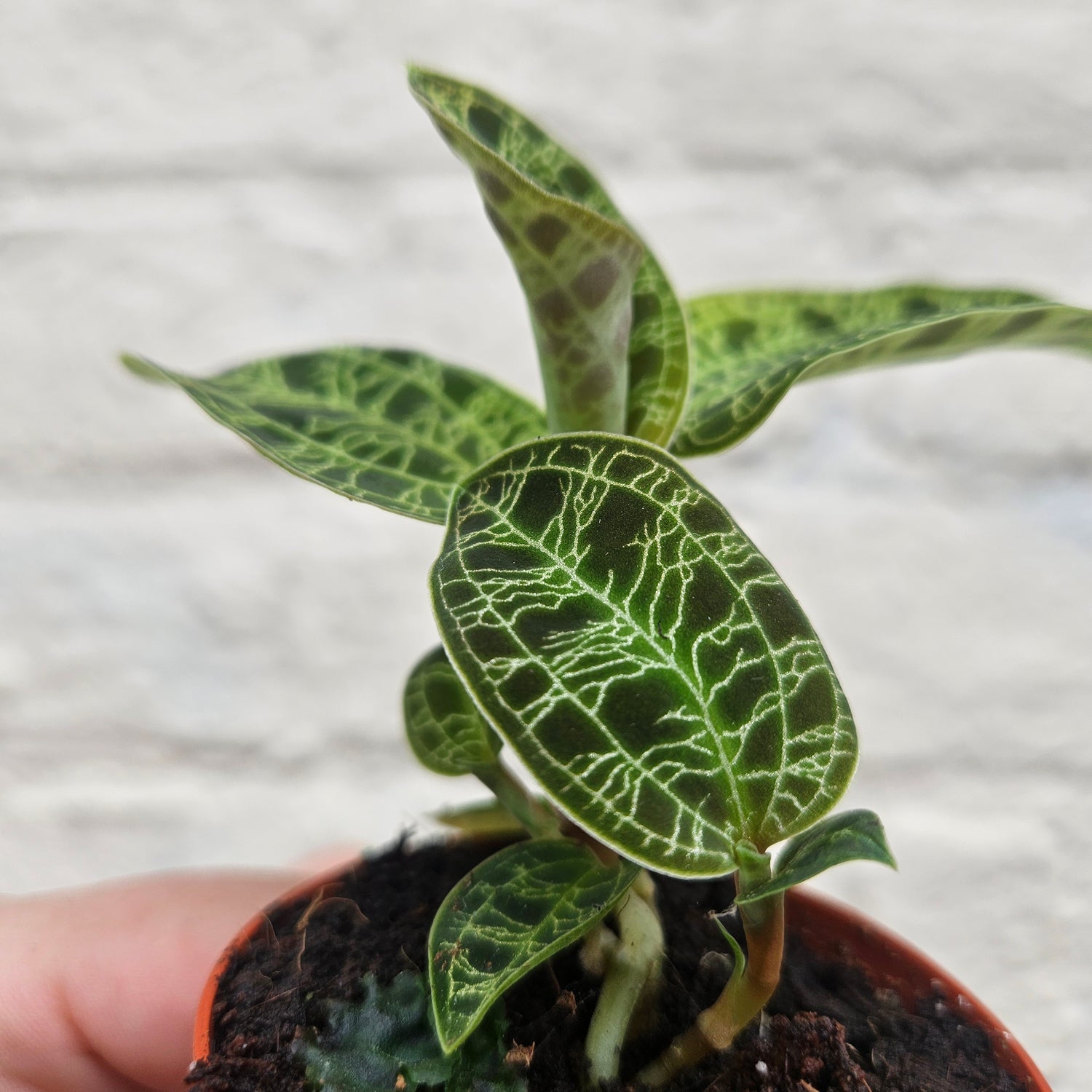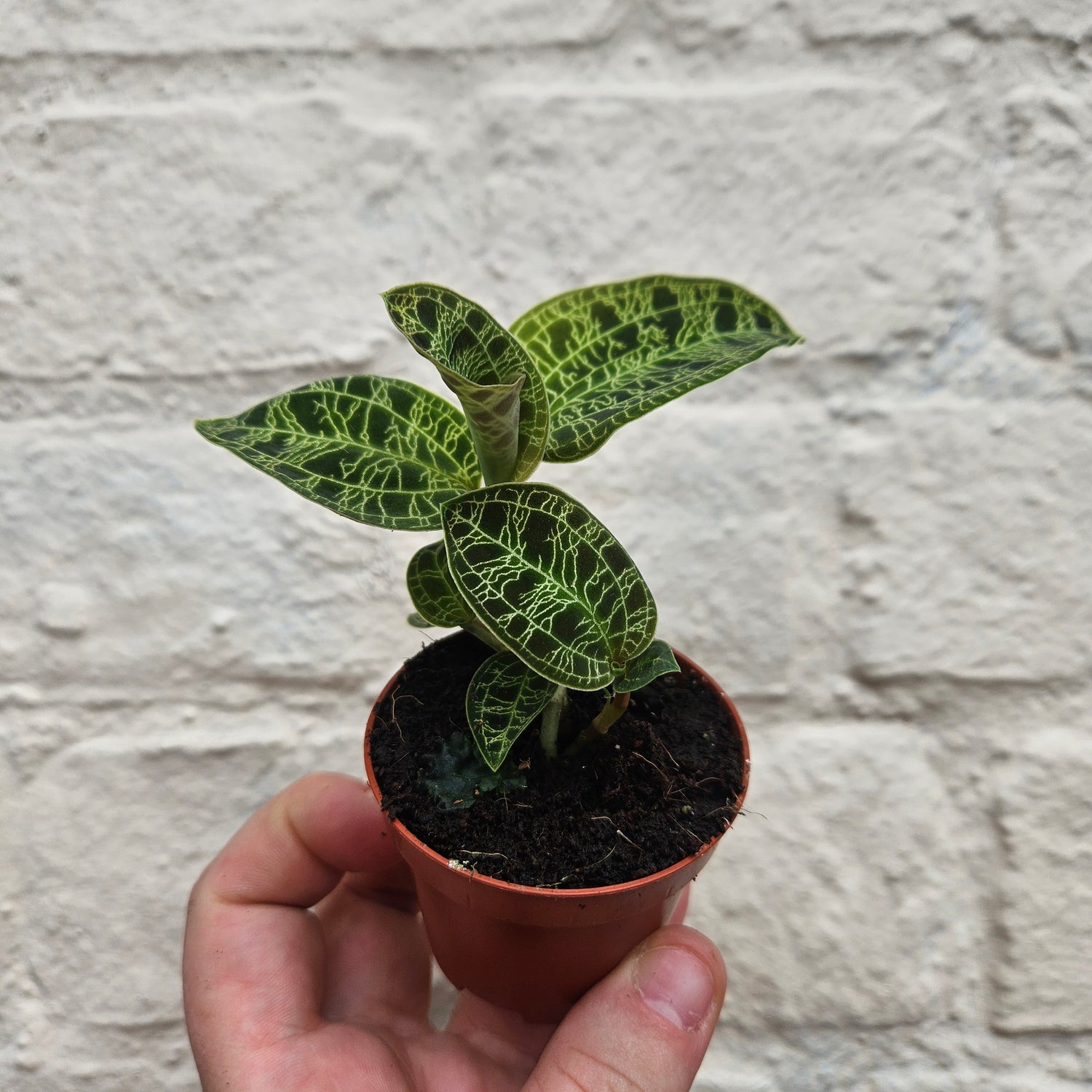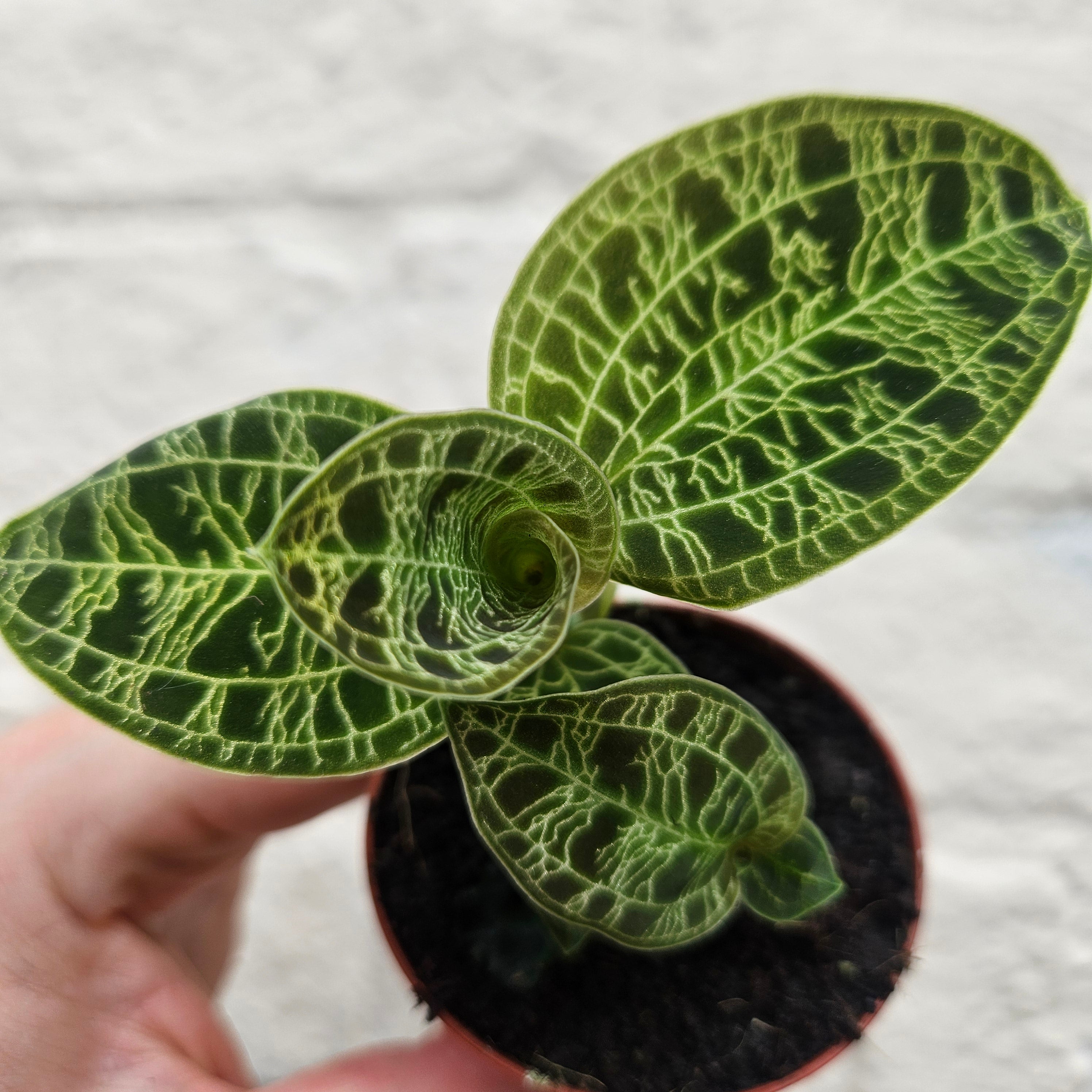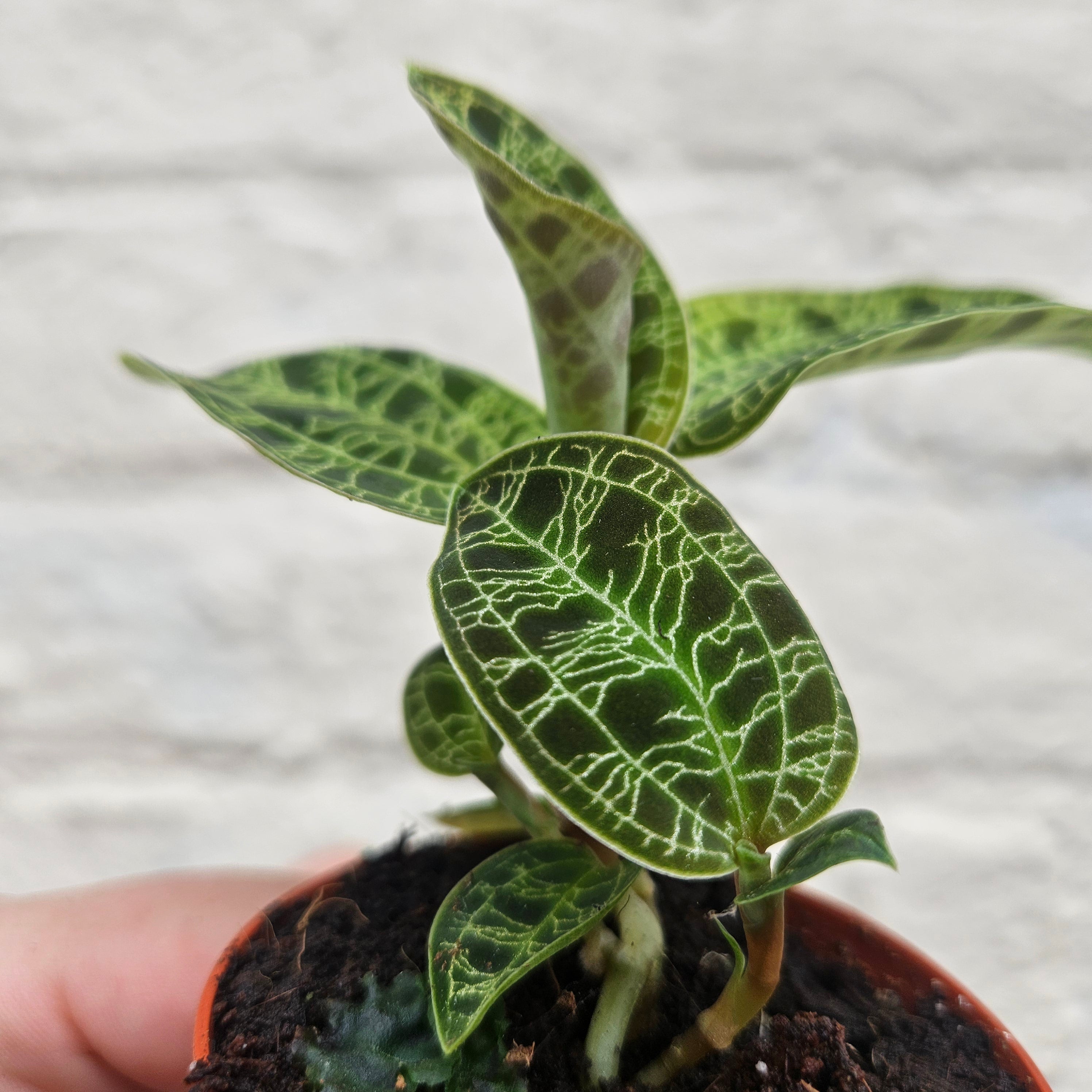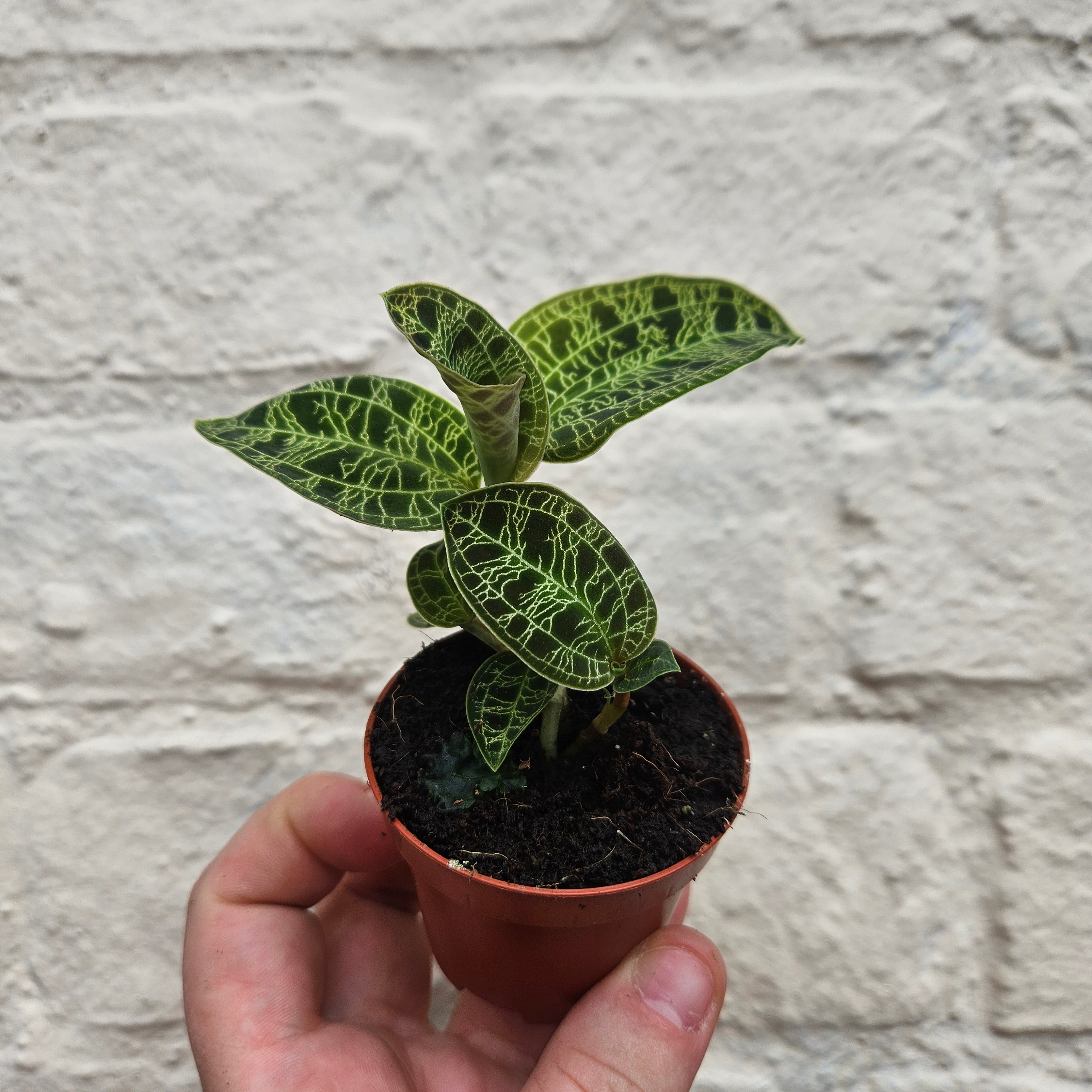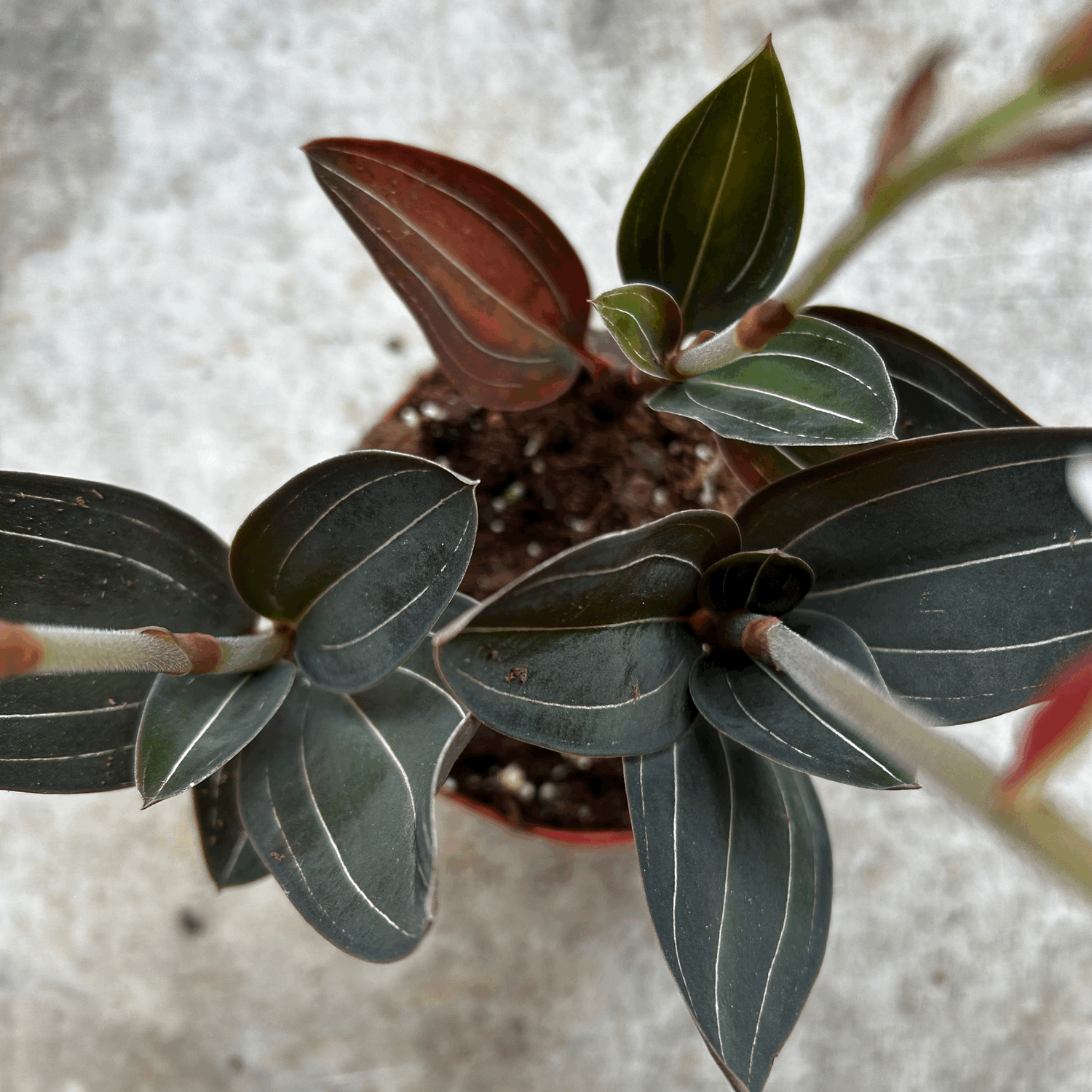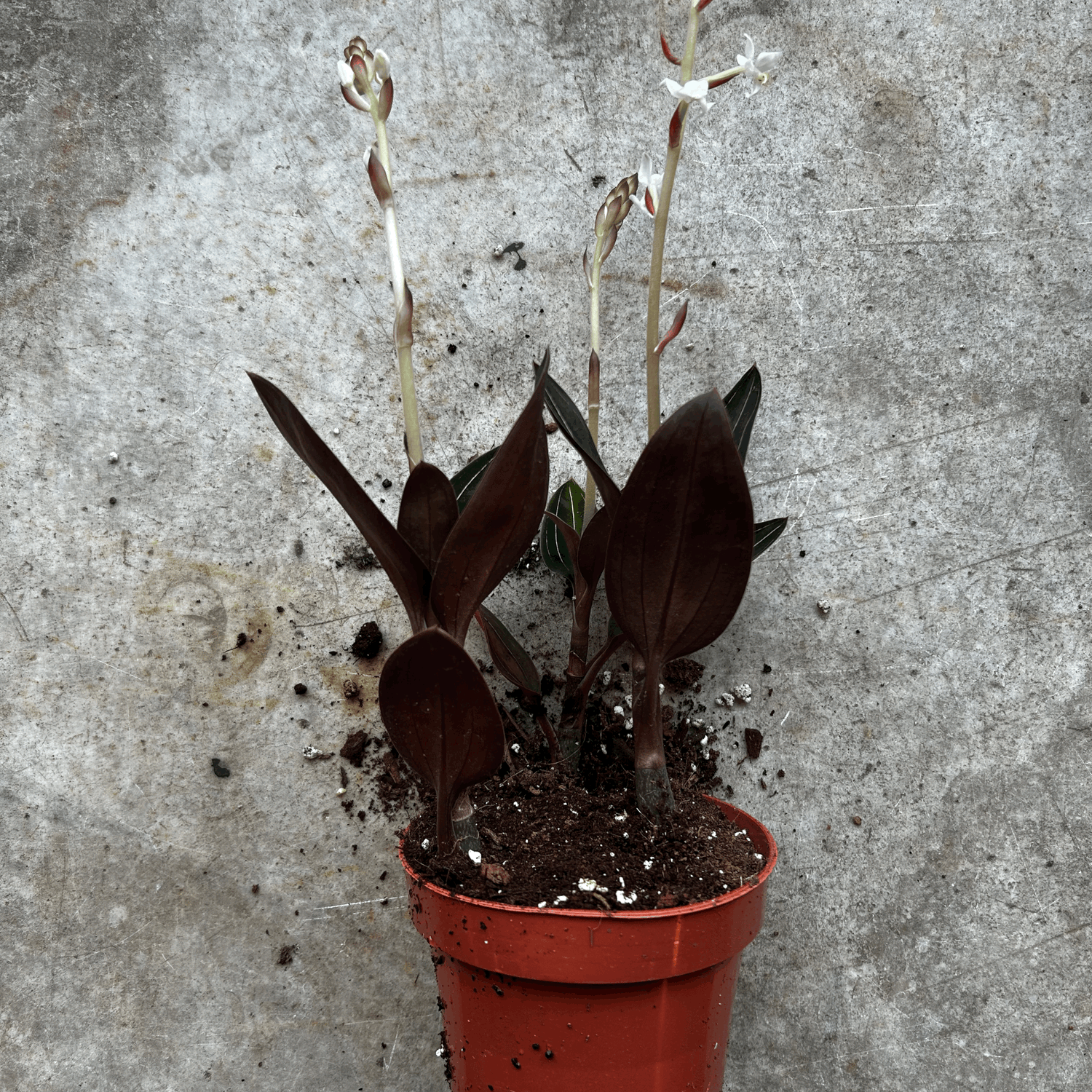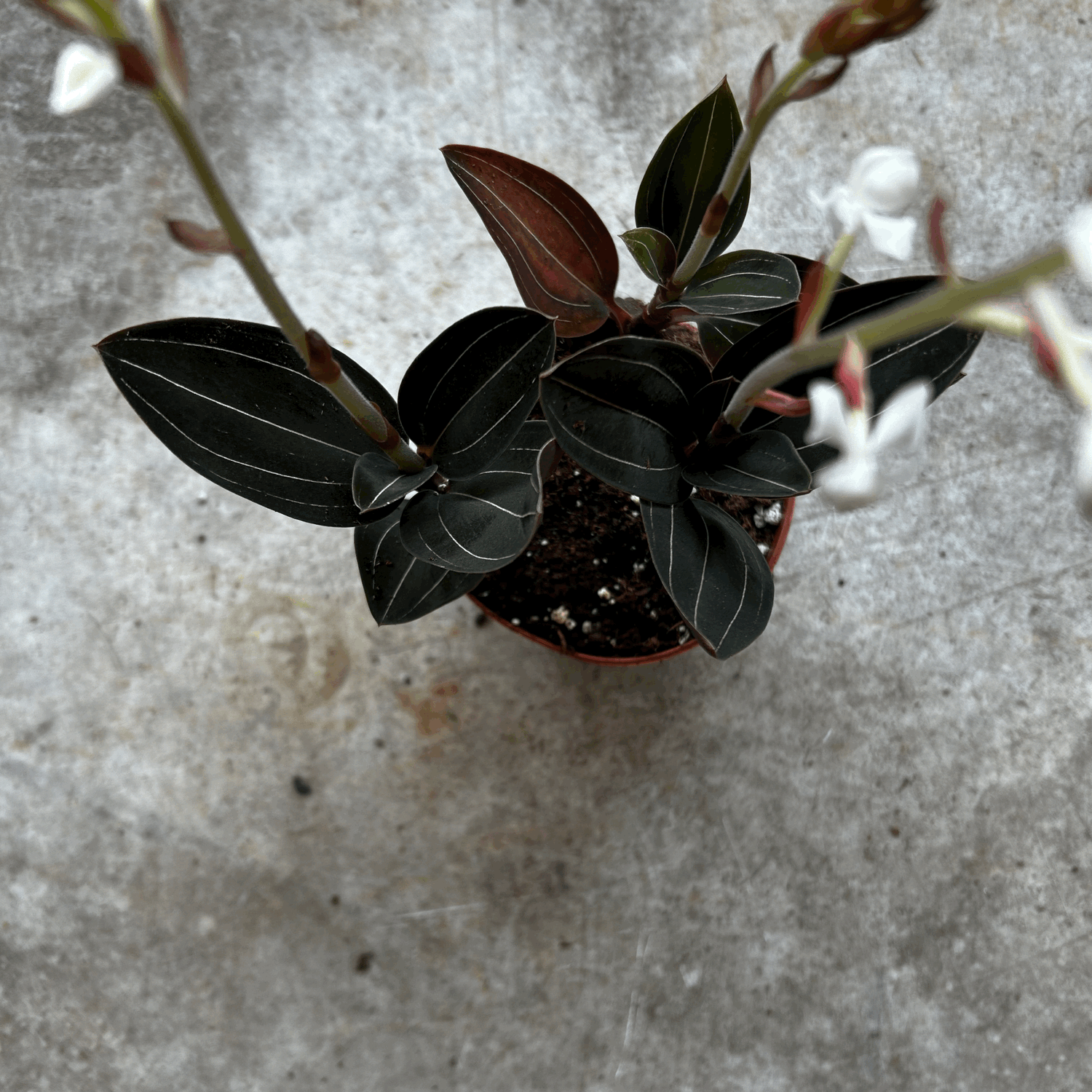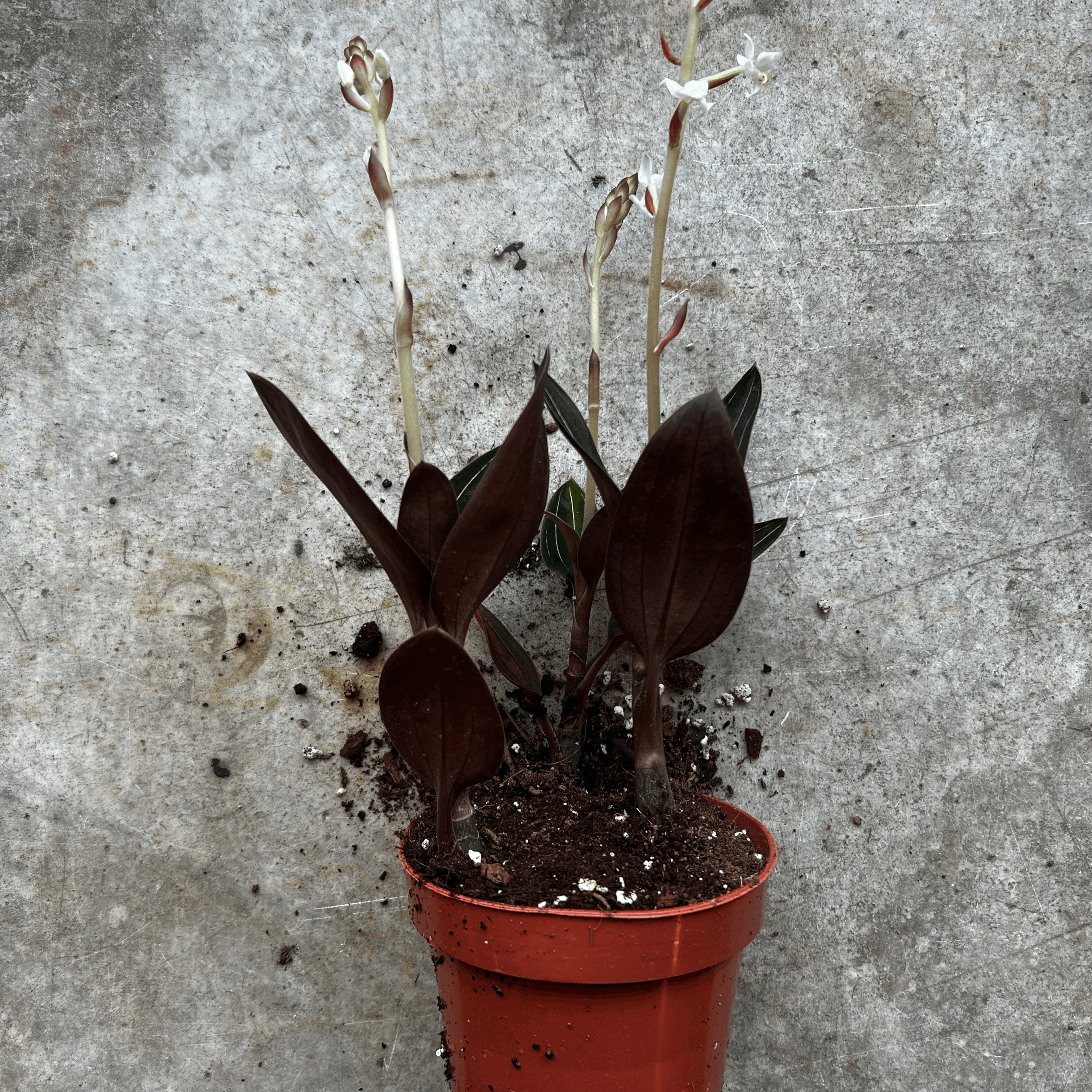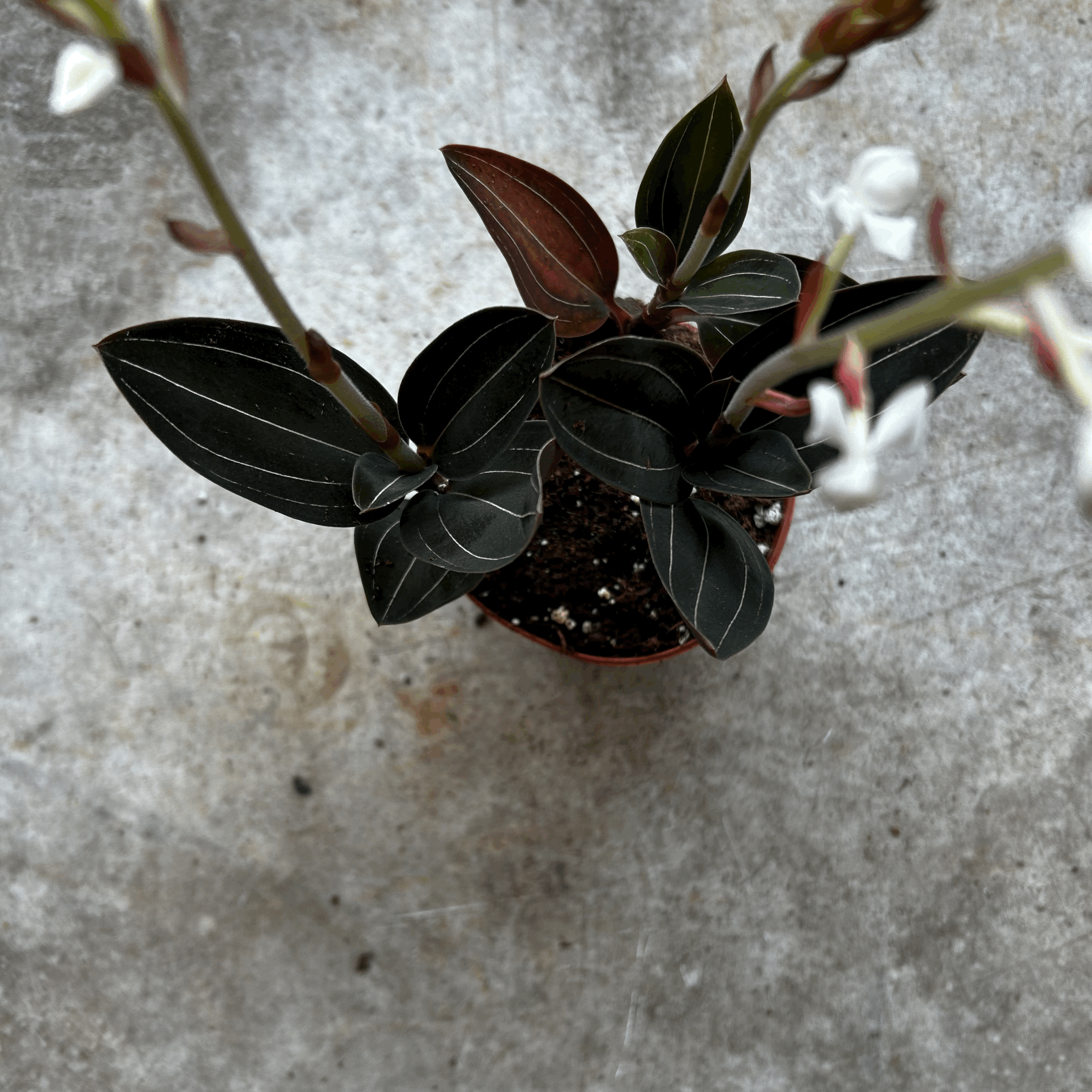Welcome to the wonderful world of Macodes petola care! Commonly known as Jewel Orchids, Macodes petola are beloved not for their blooms, but for their dazzling foliage. Their stunning leaves—marked by vibrant veins and intricate patterns—make them a standout choice for plant lovers and collectors alike.
These fascinating plants are easily distinguishable from other orchids thanks to their shimmering, velvety leaves. Whether you’re a first-time plant parent or a seasoned grower, Macodes petola brings a touch of tropical elegance and beauty into any space.
In this comprehensive guide, we’ll walk you through everything you need to know to keep your Macodes petola happy, healthy, and thriving in your care.
Macodes petola Overview
Macodes petola, commonly known as Jewel Orchids, are native to the tropical regions of Southeast Asia, including countries such as the Philippines, Indonesia, and Malaysia. They belong to the Orchidaceae family—one of the largest and most diverse plant families in the world—encompassing over 70 recognised species.
Unlike many other orchids, Jewel Orchids are terrestrial, meaning they grow on the forest floor rather than as epiphytes (plants that cling to trees). They possess a rhizomatous root system, allowing them to creep along the moist forest substrate, slowly spreading over time.
The most captivating feature of Macodes petola is undoubtedly their foliage. Their velvety leaves are adorned with intricate veining in shades of gold, lime, or even electric green—creating patterns so striking, they are often said to resemble bolts of lightning. No two leaves are ever the same, making each plant a unique natural work of art.
While they do produce small red/yellow flowers, these are fairly modest and lack the dramatic flair typically associated with orchid blooms. In their natural habitat, Macodes petola can grow up to 30 cm in height and spread, forming a lush, low-growing carpet of iridescent leaves.
Due to their love of high humidity, they thrive in controlled environments such as terrariums, where moisture levels can be closely maintained. This makes them an excellent choice for indoor plant enthusiasts looking for an exotic yet manageable specimen.
How to Look After a Macodes petola
Light:
Jewel Orchids thrive in medium, indirect light, closely mimicking the dappled sunlight they would naturally receive beneath the tropical forest canopy. Their delicate, velvety leaves are sensitive to intense light, so it’s important to keep them out of direct sunlight, especially during the harsh midday hours, as this can easily scorch or bleach the foliage.
The ideal location is near an east- or north-facing window, where the plant can enjoy gentle, consistent light without the risk of sunburn. If your only available space is near a south-facing window, consider using a sheer curtain to diffuse the light and protect the plant from overexposure.
Temperature and Humidity:
As tropical plants, Jewel Orchids are naturally suited to warm, humid conditions and thrive best in environments with humidity levels between 60% and 90%. This is higher than the average household humidity, especially during the winter months. If your home is on the dry side, you can increase humidity by placing the orchid on a shallow tray filled with water and pebbles, ensuring the pot rests above the water line. Light misting in the morning can also help, as can using a humidifier placed nearby. One of the most effective ways to provide consistent humidity is by growing your Jewel Orchid in a terrarium, where the environment can be easily controlled.
Temperature also plays a key role in the plant’s overall health. Jewel Orchids prefer a stable temperature range between 18°C and 24°C. It's important to keep them away from radiators, heaters, air conditioning units, and any areas prone to sudden temperature changes, as these fluctuations can cause stress and impact the plant’s growth.
Watering:
Jewel Orchids prefer their soil to stay consistently moist, but not soggy. Overwatering is one of the most common mistakes with this plant, so it’s essential to let the top layer of soil dry out slightly before watering again. A good way to check is by gently inserting your finger about an inch into the soil—if it feels dry at that depth, it’s time to water. If it still feels damp, wait a few more days and check again.
When it’s time to water, always use lukewarm water, ideally rainwater, if you have access to it. Tap water often contains minerals and chemicals like chlorine or fluoride, which can build up in the soil over time and potentially harm the plant. Water thoroughly, allowing the liquid to run through the pot and drain out the bottom—this helps ensure the entire root system is evenly moistened.
Be careful never to let the pot sit in standing water, as excess moisture can quickly lead to root rot, which Jewel Orchids are particularly sensitive to. Good drainage and careful watering are key to keeping this plant happy and healthy.
Fertilising:
During the growing season—typically in spring and summer—Jewel Orchids benefit from regular feeding to support healthy foliage and root development. Use a water-soluble orchid fertiliser every two to four waterings, depending on the strength and brand of the product. Always follow the instructions on your chosen fertiliser to avoid overfeeding, which can damage the plant’s delicate roots.
As autumn and winter approach and the plant's growth naturally slows down, feeding is no longer necessary. Allow the plant to rest during this dormant period, and resume feeding once active growth picks back up in the spring.
How to Re-pot a Macodes petola
Repotting is essential to keep your Jewel Orchid healthy and thriving. These orchids typically need to be repotted every one to two years, or whenever the plant begins to outgrow its container. The best time to report is in early spring, just before the growing season begins.
When choosing a new pot, size up only slightly from the original. You’ll also need a substrate that provides excellent water retention while remaining airy to prevent root rot. A mix of coco coir, sphagnum moss, bark, and vermiculite works well. Alternatively, some growers have success using 100% sphagnum moss, especially in high-humidity environments like terrariums.
-
To begin, gently remove your Jewel Orchid from its current pot and shake off any old potting medium. Inspect the roots carefully and trim away any that appear dead or mushy, using clean, sterile scissors to avoid introducing disease.
-
Add a small layer of fresh potting mix to the bottom of the new pot, then place the orchid in position. Carefully fill in around the roots with the remaining mix, gently tapping the pot to help the medium settle into the gaps. Avoid packing it down too tightly—good airflow around the roots is crucial.
-
Once repotted, water your orchid thoroughly to help the new medium settle around the roots, and let any excess water drain away completely. Avoid fertilizing for a few weeks afterward to allow the plant time to adjust to its new environment.
How to Propagate a Macodes petola
Propagating Jewel Orchids is a rewarding way to grow new plants. The most common method is through stem cuttings, especially once your plant has developed offshoots or plantlets with roots.
Before You Start:
-
Ensure the plantlet is about one-third the size of the mother plant.
-
Make sure the plantlet or stem section has visible roots forming.
Taking the Cutting:
-
Choose a healthy stem with several leaves
-
Using clean, sterile scissors, cut a few centimetres below a node (where leaves attach to the stem).
Rooting Methods:
-
Place the cutting in water, submerging the node.
-
Or place the cutting in damp sphagnum moss.
-
Alternatively, plant directly into a moist, airy potting mix.
Creating the Right Environment
-
Maintain high humidity by: Using a cloche or terrarium. Placing the cutting in a clear plastic bag (with small holes for ventilation).
-
Keep the cutting in medium, indirect light—avoid direct sunlight.
Aftercare:
-
Wait for roots to develop, which may take several weeks.
-
Once rooted and stable, pot up into a slightly larger container if needed.
How to Prune a Macodes petola
Pruning your Jewel orchid helps maintain its shape and encourages healthy growth. If you notice any brown or yellow leaves, remove them using clean, sterilized scissors to prevent the spread of disease.
Spent flowers typically fall off on their own, so there's usually no need to remove them manually. However, once your orchid has finished blooming, you can cut back the flower spike.
How Often Should I Water a Macodes petola
Watering frequency depends on several factors, including humidity, temperature, and location. Jewel Orchids placed in shadier spots typically require less frequent watering than those in brighter areas. Always check the potting medium first. If it still feels damp, wait a few more days before watering again. Overwatering is one of the most common mistakes with Jewel orchids.
Why Are My Macodes petola Leaves Going Yellow, Brown, Curling?
Even with the best care, your Jewel Orchid may occasionally show signs of stress. One common issue is yellowing leaves, which can be caused by overwatering, underwatering, or exposure to too much light. To help your orchid recover, begin by adjusting your watering routine—make sure the potting medium is allowed to dry slightly between waterings. It’s also important to ensure the plant is placed in a location with bright, indirect light, avoiding any direct sun. While an occasional yellow leaf, especially on older growth, is normal, widespread yellowing usually suggests that something in the care routine needs adjusting.
Browning edges on the leaves are often a sign that your orchid isn’t receiving enough humidity. Jewel Orchids love moisture in the air, and dry indoor conditions can lead to crisping at the leaf margins. To improve humidity, place your orchid on a shallow tray filled with water and pebbles, making sure the pot rests just above the water level. Morning misting can also help, and for more consistent humidity, using a nearby humidifier is a great option. One of the most effective ways to maintain ideal conditions is by growing your Jewel Orchid in a terrarium, where the environment can be carefully controlled.
Curled leaves may indicate either too much light or too little water. If the leaves begin to curl or twist, check to make sure your orchid isn’t sitting in direct sunlight, which can cause stress. Additionally, ensure you’re watering regularly—wait until the top inch of soil feels dry before watering again to keep the plant hydrated without overdoing it.
Are Macodes petola Poisonous to Cats and Dogs?
No, Jewel Orchids are considered non-toxic to cats and dogs but if large quantities are eaten can cause nausea and vomiting. But best to keep them out of reach of pets so they don't get damaged!
With these expert tips, you're well-equipped to care for your Macodes petola and enjoy its unique beauty in your home. Happy Jewel Orchid growing!
